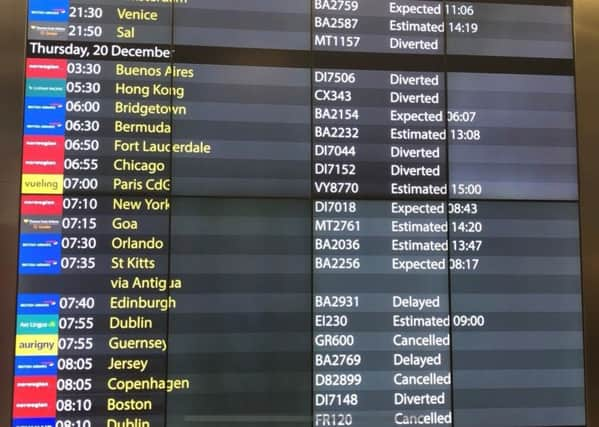Gatwick chaos shows how vulnerable we are to drones '“ leader comment


If something that is widely available and relatively cheap can shut down an airport – affecting the journeys of tens of thousands of people, with some incoming planes diverted to other countries – then clearly action is required.
Gatwick was forced to close its runway after two drones were spotted flying over the perimeter fence on Wednesday evening and there were further sightings yesterday, suggesting a deliberate attempt to disrupt flights.
Advertisement
Hide AdAdvertisement
Hide AdAccording to experts, drones pose a “small but not negligible” risk to aircraft as they can potentially smash the cockpit windscreen or get sucked into a jet engine, both of which could cause a plane to crash. The ‘Miracle on the Hudson’ – when a plane famously made an emergency landing on the river in New York City in 2009 – was necessary because the aircraft’s engines had been disabled after it hit a flock of Canada geese. So no one can argue that the decision to close Gatwick because of the presence of drones was not the correct one.
Given the ease with which drones can be acquired, there are always going to be some people who will use them irresponsibly or with malicious intent. And that means airports and other important buildings need to have a means of protecting themselves.
The UK Government has been working on ‘geofencing’ systems that, if installed on drones, would prevent them from flying into restricted areas. They should perhaps now consider making this a legal requirement for any drones operated in this country.
That might reduce the number of incidents involving supposed ‘pranksters’, but there will also be a need to be able to take out drones used by terrorists and the like.
At Gatwick, police sensibly ruled out trying to shoot them down because of the risk that someone might be hit by a stray bullet.
In Japan, police have experimented with interceptor drones equipped with larget nets, while in the Netherlands eagles were trained to capture them. Cheap, mass-produced drones have many perfectly reasonable uses – from taking unusual photographs to delivering parcels or pizzas – but they also bring potential problems that the Government needs to address, such as noise and the potential for accidents or invasions of privacy. However, the security threat is the most serious and one that requires effective action – before it’s too late.